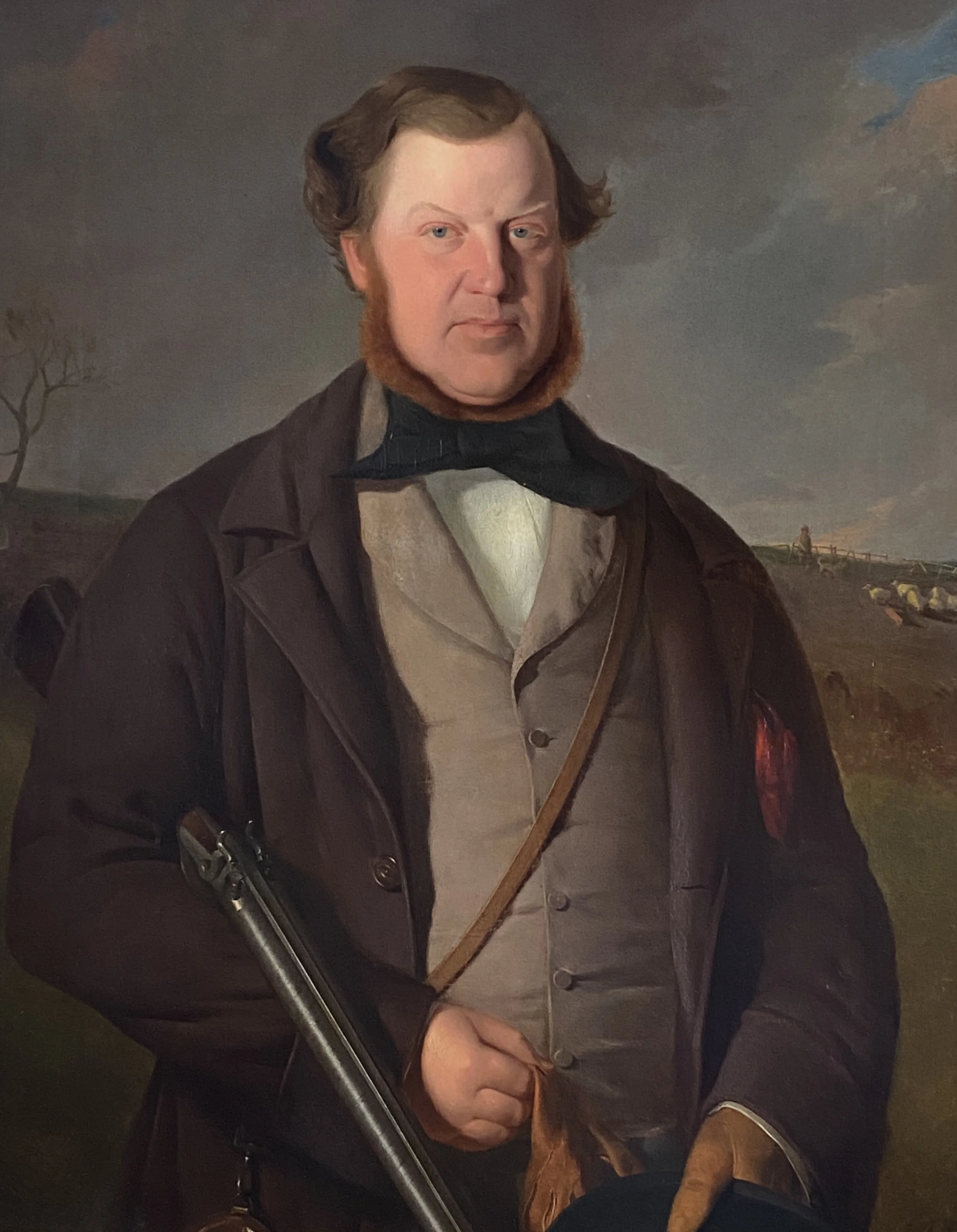
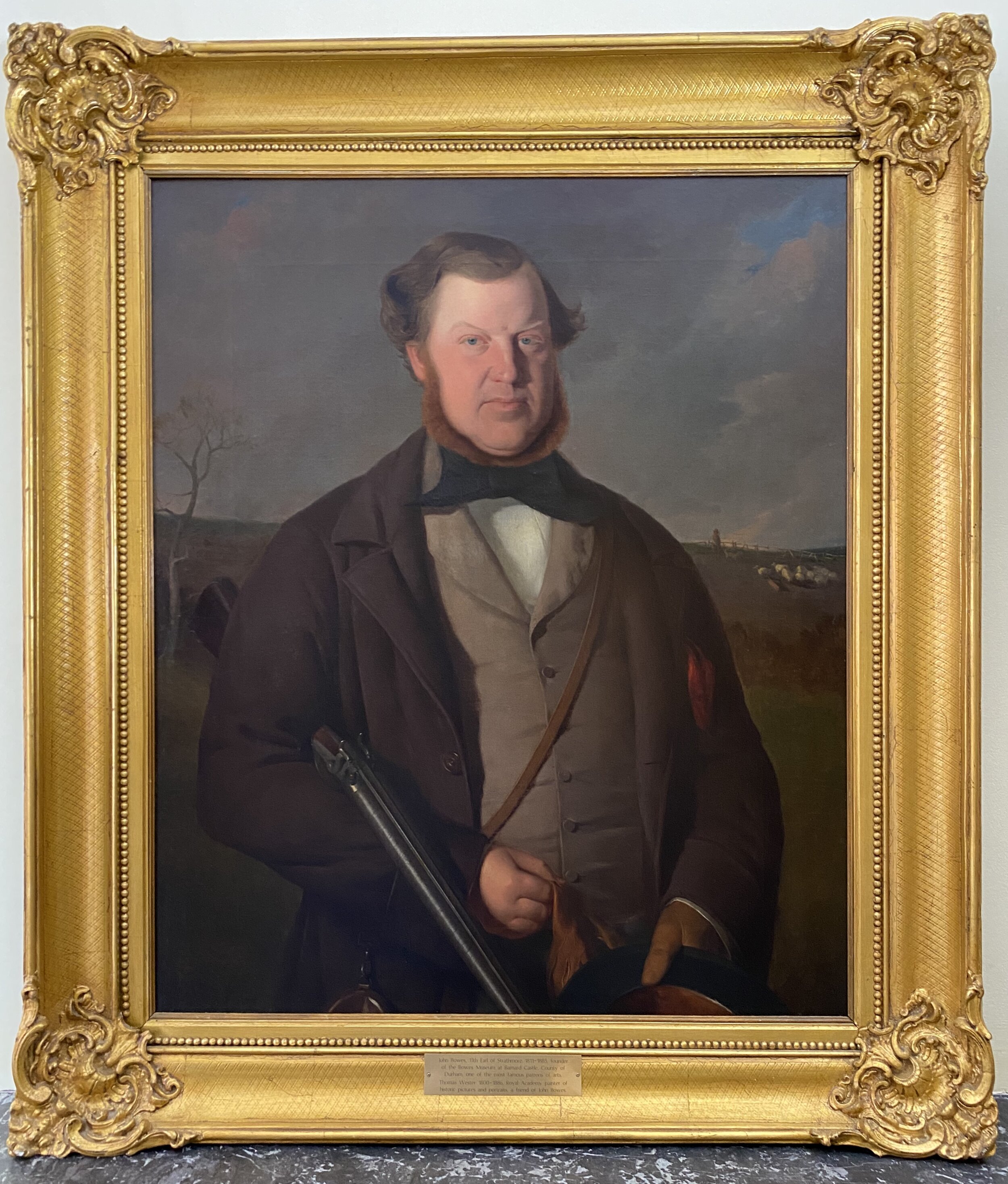
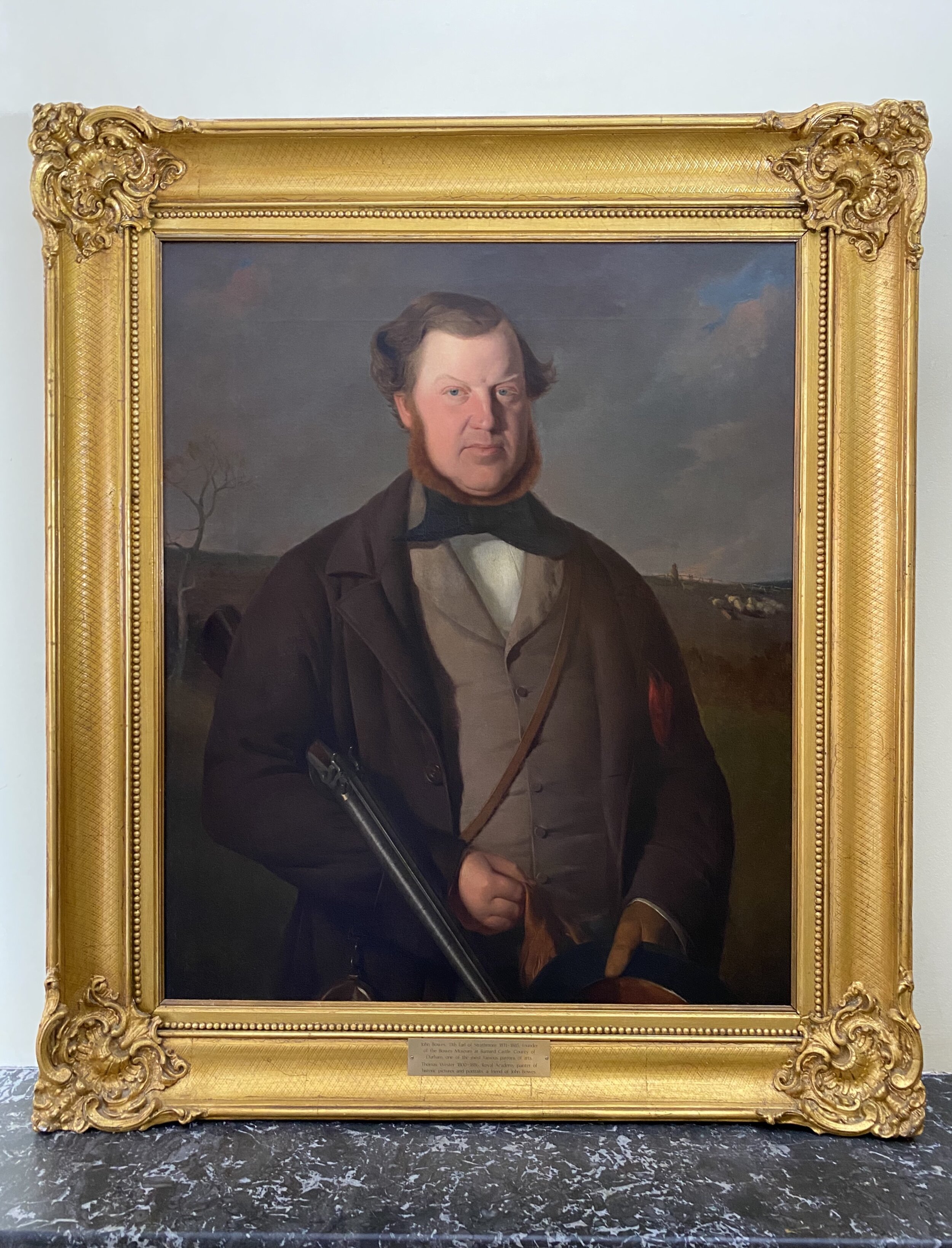
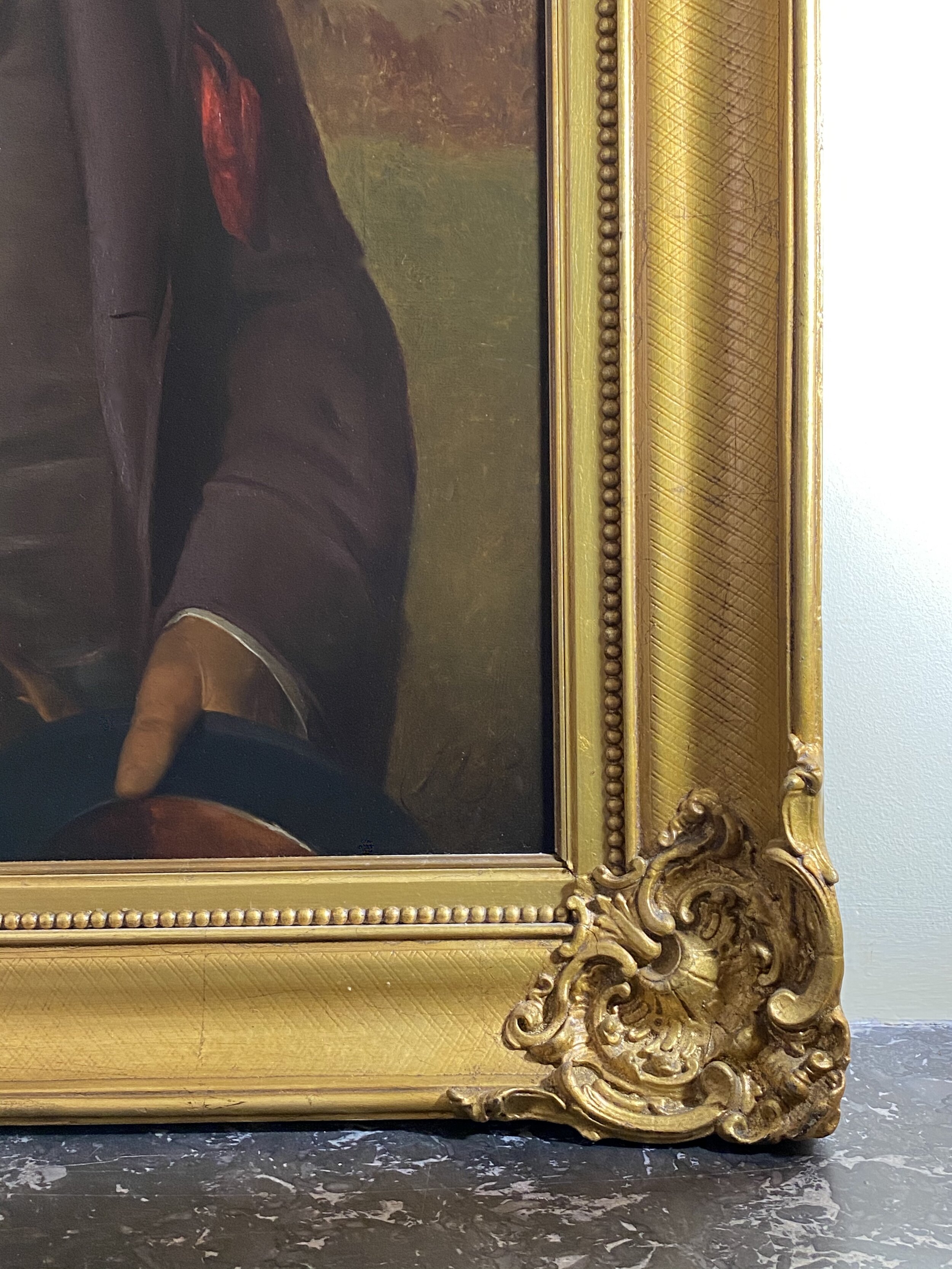
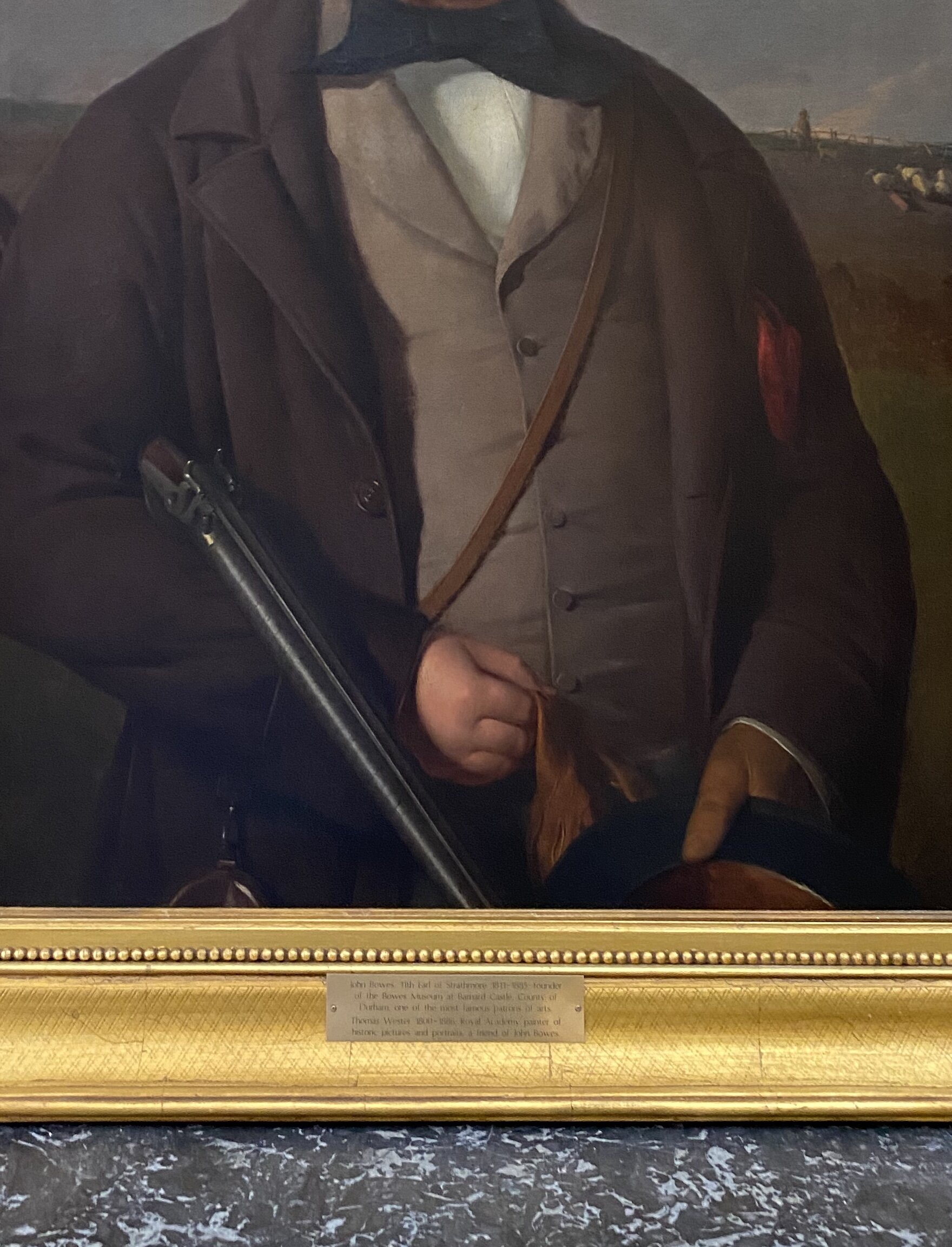
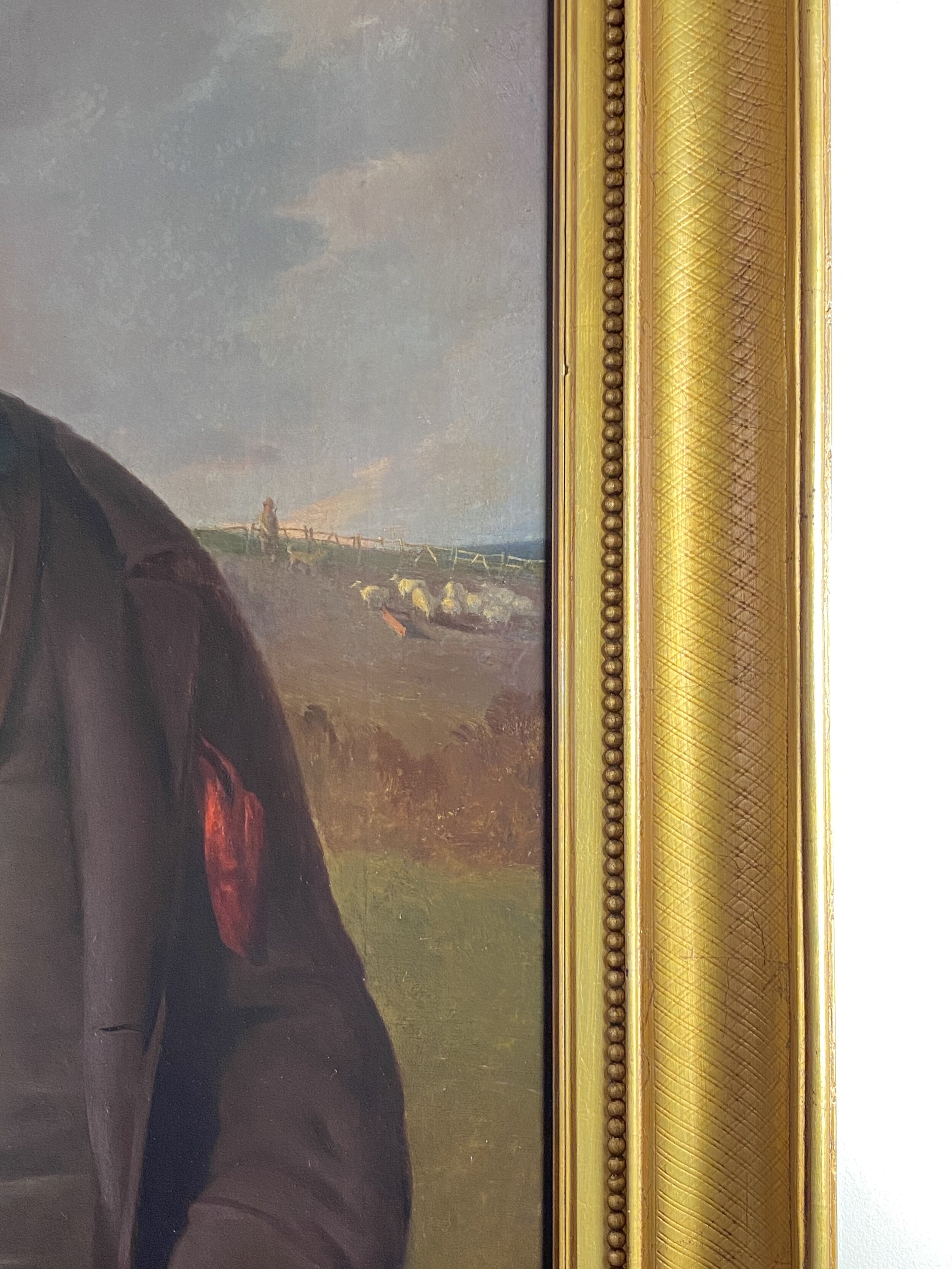
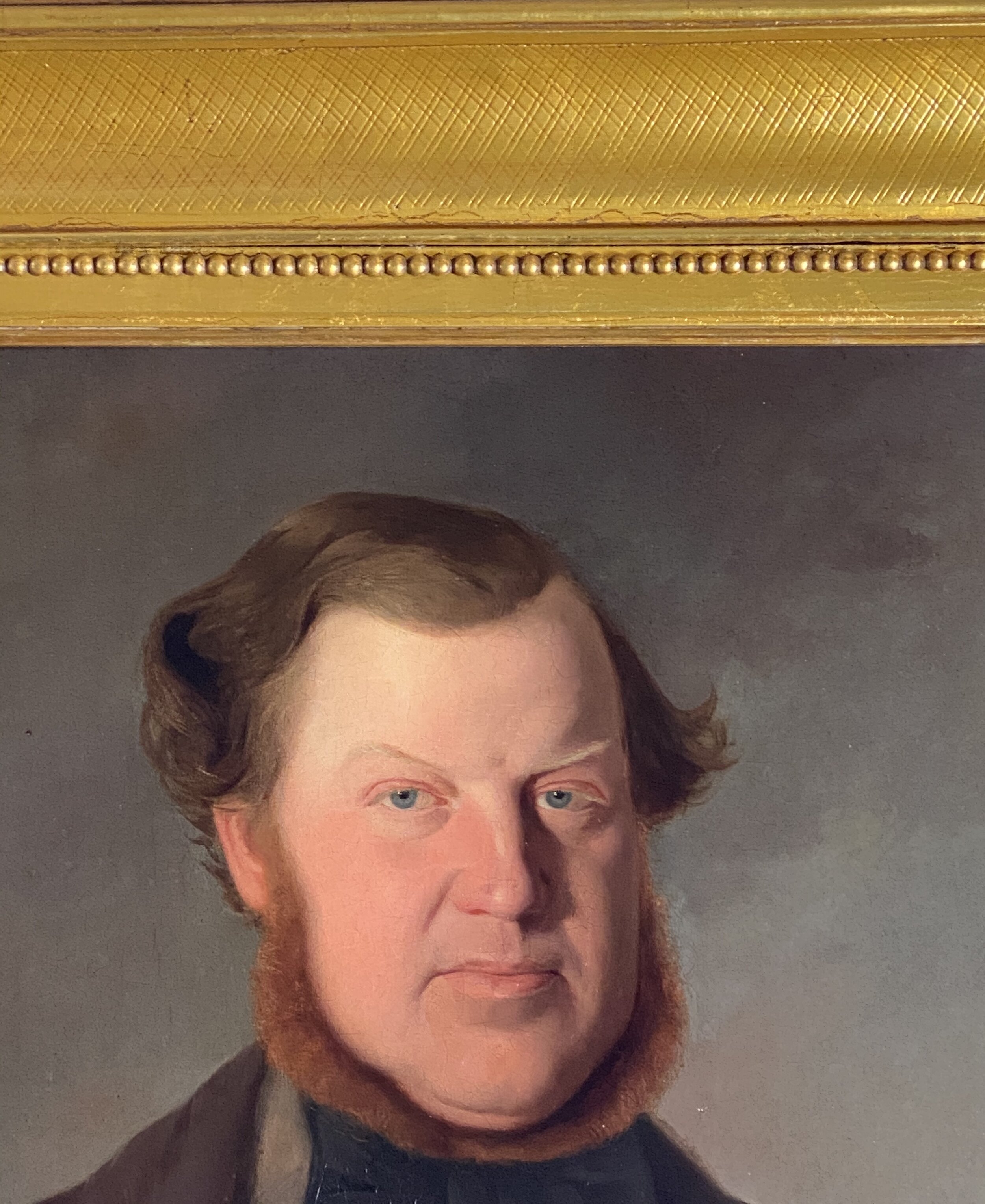
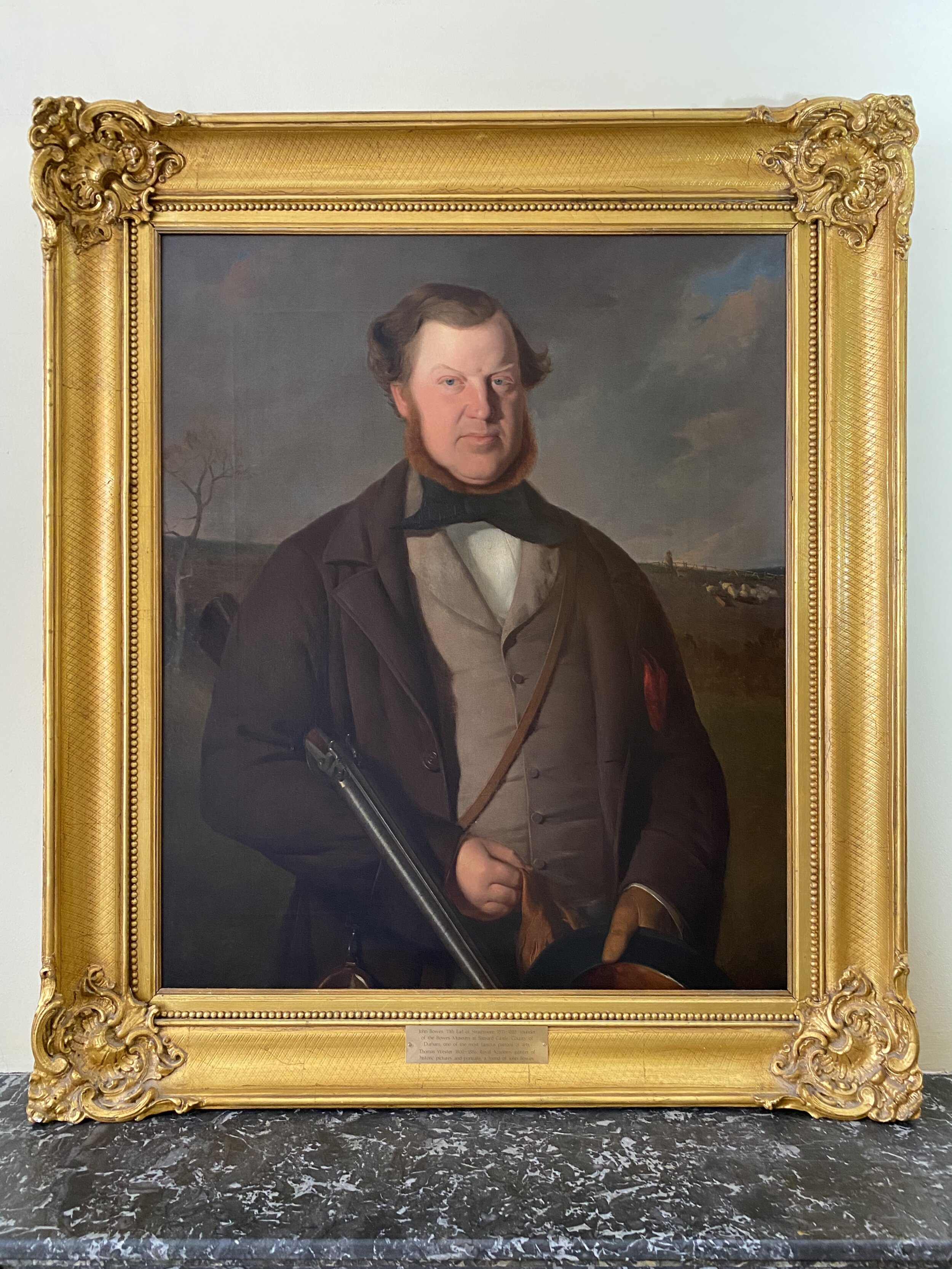
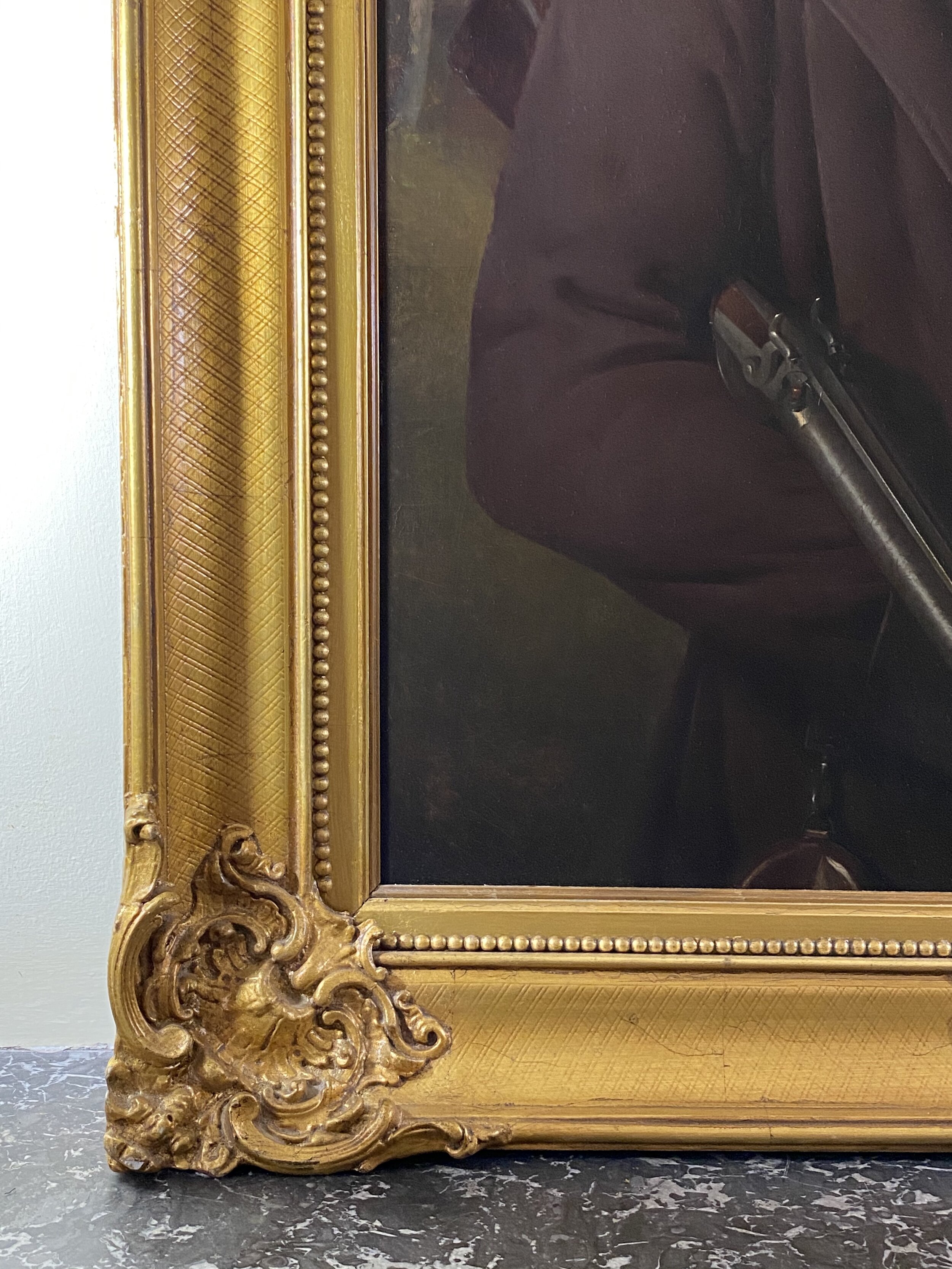
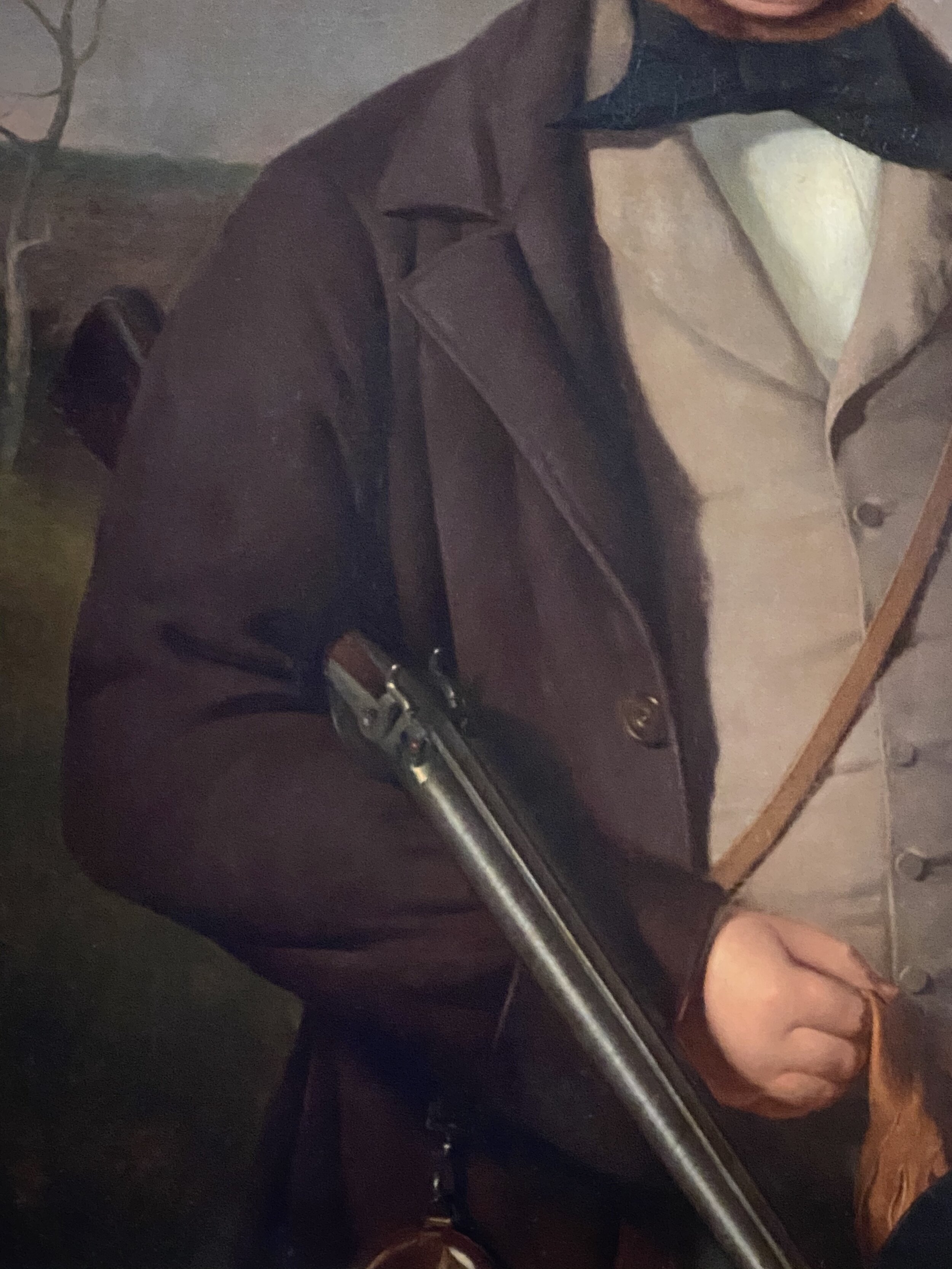
19TH CENTURY PORTRAIT OF JOHN BOWES - BY THOMAS WEBSTER RA (1800-1886)
An imposing and fine quality 19th century English portrait of a gentleman traditionally identified as the politician, socialite and art connoisseur John Bowes (1811 - 1885)
The sitter is portrayed half length within a landscape, and he faces us directly with a confident stare. If we were in any doubt as to his status, his clothing and accoutrements, underscore the fact that he is a landed gentleman, engaged in country pursuits. He holds his shotgun, gloves and hat and behind him a flock of sheep are being tended by a shepherd and his dog, on the hillside.
This impressive portrait is in an excellent state of conservation, and is ready to hang and enjoy in its original 19th century swept frame.
John Bowes (1811-1885) John Bowes was an art collector and racehorse owner who founded the Bowes Musem in Barnard Castle, Teesdale. He was the son of John Lyon-Bowes, 10th Earl of Strathmore and Kinghorne (1769 - 1820). He was educated first at Eton and then at Trinity College, Cambridge. His father died in 1820, but he did not inherit his father’s title because his parents were unmarried at the time and therefore his younger brother claimed the Earldom. A legal battle between the two brothers led to the family’s estate being split between them with his younger brother retaining the title. John secured Gibside Hall in the Derwent Valley and Streatlam Castle close by in County Durham, whilst his brother retained Glamis Castle in Forfarshire, Scotland. Queen Elizabeth II’s grandfather was Claude Bowes-Lyon, the 14th Earl of Strathmore and Kinghorne.
In 1852 John married the French actress Josephine Benoîte Coffin-Chevalier (1825 – 1874) who was working in Paris at the Théatre des Variétés, which he owned. In the 1860s the couple returned to the UK and begun their life work, the creation of the Bowes Museum. Construction started in 1868 but was not completed until 1892. The building itself was, and still is, out of keeping with the small provincial northern town where it sits. The building is a prime example of Georgian architecture and, equally, inside it is home to a multitude of historically significant objects. Between 1862 and 1874, John and Josephine purchased 15,000 objects for the museum and today it houses internationally significant works of art including paintings by Goya and Canaletto. On his death, Bowes left the vast majority of his estate to the museum.
Bowes was a Liberal politician for South Durham, serving the constituency between 1832 and 1847. He also served as High Sheriff of Durham in 1852. Gibside Hall was passed on to the National Trust in 1963.
Thomas Webster RA (1800-1886) Thomas Webster was born on March 20, 1800, in Ranelagh Street, Pimlico, London, Thomas Webster was the son of a member of George III’s household. Though Webster was initially educated as a chorister at St. George’s Chapel, Windsor, and at the Chapel Royal, St. James’s, London, he preferred art to music and began his studies at the Royal Academy Schools in 1821, and won a gold medal in 1825.
During his career he exhibited eighty-three works at the Royal Academy between 1823 and 1879, thirty-nine at the British Institution (1824–44), and eight at the Society of British Artists (1825–34). He was ultimately elected an ARA in 1840 and an RA in 1846. The largest collection of Webster’s works is in the Victoria and Albert Museum in London.
Higher Resolution images on request. Worldwide shipping available.
Canvas: 35” x 29 ” / 89cm x 74cm. Framed: 44” x 38.5”/ 113cm x 98cm.
SOLD

